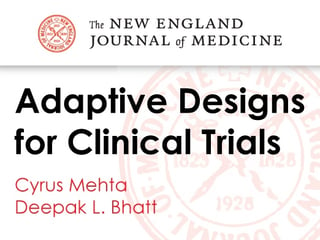FDA 22 Case Studies and Mitigating Phase 3 Risks


In a January 2017 paper (1), the FDA reviewed 22 case studies where promising Phase 2 trials did not result in efficacy, safety or both being confirmed in a Phase 3 trial.
At the outset, the authors of the paper are careful to state that the aim is not to assess why these unexpected results occurred, but rather to demonstrate how different trials contribute to developing our scientific understanding of the product.
The case studies encompass products treating a range of indications from smoking cessation, through to schizophrenia, heart failure, and triple negative breast cancer.
In the concluding discussion, the authors note that unexpected results can ensue from large randomized controlled trials across all types of products, patients, and conditions. They also note that even where there is a plausible mechanism of action for the product, this doesn’t necessarily translate into clinical benefits. Finally and importantly, ‘ promising biomarker data in phase 2 do not necessarily translate into effective product performance.’
The paper makes for sobering, if not surprising reading. Previously on the blog, we have shared analysis of the reasons for Phase 3 failure. For both safety and efficacy issues which emerge in a Phase 3 trial, we need to be certain we can answer the affirmative to the below questions in relation to the earlier phases of development.

Was the dose right?
Was the sample size right?
Was the population right?
Clearly, good clinical trial design and statistical approaches cannot turn an ineffective drug into an effective one. Our goal as scientists must be to ensure that we give a drug the best chance of demonstrating its benefit, should that benefit exist. After all, if a drug which could have been successful fails that is a tragedy.
At Cytel, we work extensively with customers in a number of ways to help them mitigate their clinical development risks. There are several strategies we use across the product life cycle to help improve a drug candidate's probability of success and reduce Phase 3 attrition, including:
Using Modeling approaches to Maximize the value of clinical data obtained in Phase 2 trial
An accurate dose-ranging model can properly support your dose selection and make the most of the information available from early phase data, providing valuable insights into the new therapy. One popular method for modeling is the multiple comparisons procedures modeling approach (MCPMod Approach) developed by Pinheiro, Bornkamp, and Bretz. (2)
Quantitative Go/ No-Go Decision Making
The development of a consistent approach to quantitative decision-making means that once trial results are available they can then be interpreted against a pre-defined framework, allowing clear decisions about the future of the trial to be made quickly and robustly. Using an approach where studies are designed from the outset with the decision in mind, the paradigm is shifted from the P Value to Probability of Success.
Read more about Quantitative Go/ No-Go Decision-Making
Confirmatory Adaptive Trials
Use of adaptive trials in exploratory research may help to maximize the value of the clinical data obtained to inform later phases of development. Applying adaptive trials in a confirmatory setting can also help to manage inherent Phase 3 risks. For example, sample size re-estimation adaptations allow sponsors to mitigate against underpowered trials, verify trial assumptions at the interim analysis, and potentially commit fewer patient resources upfront. The familiar ‘promising zone’ design ( 3) (Mehta and Pocock 2011) partitions the outcome at interim analysis into unfavorable, promising and favorable zones, based on conditional power. In this approach, the sponsor is able to increase sample size only when the interim outcome falls into a promising zone.
A combined Phase 2/3 or 'seamless' design can help to save time and patient resources, by removing the white space between stages and supporting the selection of the optimal dose. A population enrichment design can mitigate risks in cases where there is heterogeneity of response between sub-populations, allowing the trial to adapt to focus on entirely responder subgroup should the drug not show efficacy in the whole population.
Read Mehta and Bhatt New England Journal Medicine article :
Adaptive Designs for Clinical Trials (4)
Cytel Strategic Consulting group works with a range of biopharmaceutical and medical device customers on a variety of critical projects helping to mitigate clinical development risks. To read more examples of how we help click the button below.
Liked this article? Join our audience of global biopharma innovators and sign up for Cytel blog updates direct to your inbox.
References
1) 22 Case Studies where Phase 2 and Phase 3 Trials had Divergent Results ( US Food and Drug Administration)
2) Pinheiro, José, Björn Bornkamp, and Frank Bretz. "Design and analysis of dose-finding studies combining multiple comparisons and modeling procedures." Journal of Biopharmaceutical Statistics 16.5 (2006): 639-656.
3) Mehta, C. R., & Pocock, S. J. (2011). Adaptive increase in sample size when interim results are promising: A practical guide with examples. Statistics in Medicine, 30(28), 3267-3284.
4) Bhatt, D.L. and Mehta, C. (2016) ‘Adaptive designs for clinical trials’, New England Journal of Medicine, 375(1), pp. 65–74. doi: 10.1056/nejmra1510061.
With thanks to Charles Liu and Jim Bolognese of Cytel.



